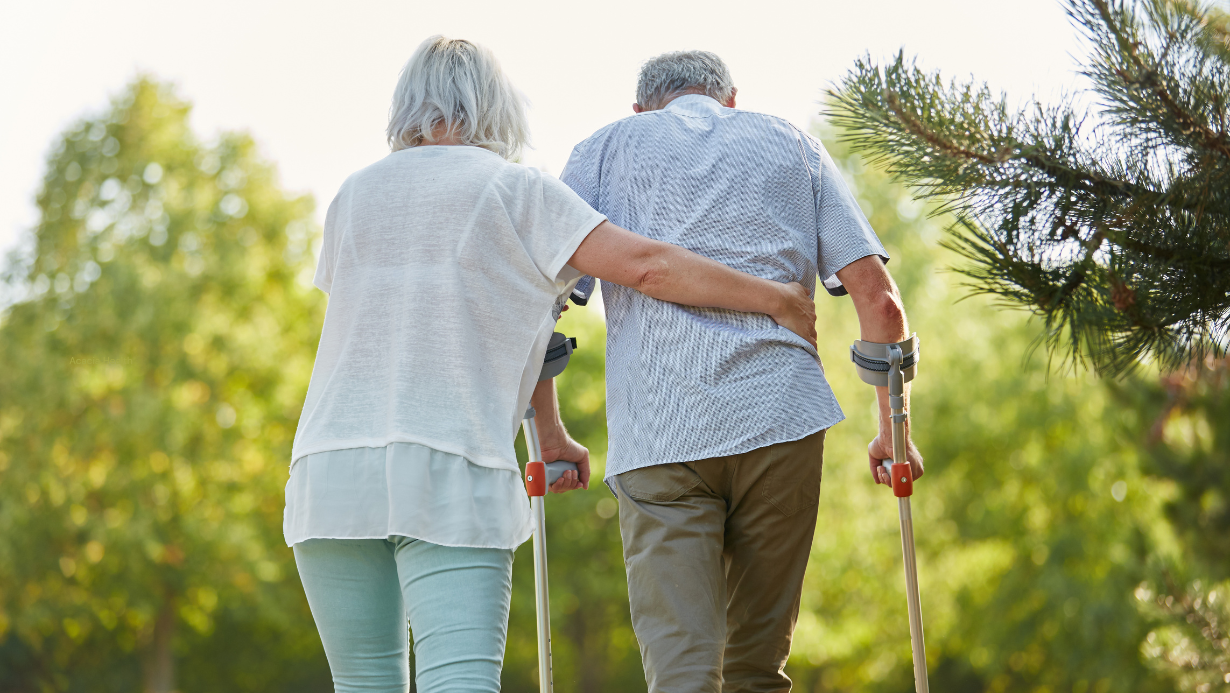This is part two of a three part series, click here for article part one and part three.
You might be surprised what acknowledging your thoughts and emotions can do
In my fourth year of practice as a physiotherapist, I was massaging a patient’s back and I felt a painful “ping” in my right shoulder. That wasn’t the first time I had hurt my shoulder, but unlike the other times, the pain didn’t go away. After six months of ongoing pain and immense frustration, I was worried my career was over.
Then, one evening after arriving home from work, my girlfriend pointed out I had complained about my shoulder three times in just 30 minutes. I didn’t remember mentioning it even once. As her comment sunk in, the strangest thing happened – half of my pain went away!
In that moment, I realized the fear and frustration I felt due to my shoulder pain was constantly weighing on my mind (in pain research they call this ruminating and catastrophizing). I had learned that these negative thoughts could amplify pain. By acknowledging that these emotions had been amplifying my pain, and thereby acknowledging that my injury wasn’t as bad as I had thought, my pain reduced. In other words: as my perceived threat reduced, my pain reduced.
That relieving insight led to an epiphany: the difference between this shoulder pain and my previous shoulder pain was not the severity of injury (after all, I was only massaging when this pain started, previously I hurt my shoulder lifting heavy weights). Rather, the most notable difference was my stress level. This recent shoulder injury happened at a time in my life when I was deeply distressed.
Over the next few weeks I significantly reduced my stress by settling three big decisions I had been wrestling with for a long time. Amazingly, after simply making those decisions, the other half of my pain disappeared. I was then able to work and lifting weights without any pain.
Psychology is biology
In western culture, the acceptance that emotional suffering could legitimately contribute to physical pain was lost around the renaissance [1]*. However, in the last few decades an enormous amount of research has found that emotions, thoughts, mood, beliefs and one’s social influences are all essential components of the pain experience [1-7]. These components are not only the consequence of pain, but can also be involved in the cause, maintenance, and amplification of physical pain.
This research has led to an acknowledgement that pain is not the result of a one-way message traveling along a single path from injury to the brain. In fact, pain is now defined as: “an unpleasant sensory and emotional experience associated with, or resembling that associated with, actual or potential tissue damage” [8].
I think it is hard to understand the biological process of thoughts, emotions and social context legitimately contributing to pain, because pain is invisible.
To help comprehend how real this process is, think of some other ways our thoughts, emotions and social settings influence our physical/biological reactions: We subconsciously express our emotions through facial expressions and body language; we cry if we are upset or happy; we tense our muscles when we are stressed or angry; we may blush if we get embarrassed; some people even break out in a rash when they are distressed. We would not accuse someone of imagining a rash or say a rash was “all in your head”, even if the cause of their rash was emotional distress.
The point I am trying to make is that there are real biological reactions to our thoughts and emotions. Just because we cannot see pain, doesn’t mean it is not just as real as a facial expression or a rash.
My take-home message
I would encourage any reader who has persistent pain to first see their doctor and to follow all the usual medical recommendations. But, for those who have tried all the usual treatments and still have no resolution, I would encourage you to look deeper.
I have seen my patients resolve their persistent pain through acknowledging how their negative thoughts and emotions contribute to their pain experience, overcoming their fear of being damaged, and by changing their social environment. Their pain, like my pain, was 100% real. It was the result of real biological processes in our body. It was triggered by movement. But the underlying cause of the pain was no longer an injury.
To follow are some resources I share with my patients to help them reflect on their pain experience:
Try this thought experiment
Below is a list of emotions, thoughts, moods, beliefs and social context that research [1-7] has found can trigger, maintain, and amplify your pain. Read through the list and document which of the below you are currently experiencing.
- Depression
- Anxiety
- Thinking you are seriously damaged
- Thinking you will never improve
- Fear that movement will cause more damage
- Anticipating pain or injury
- Being ever mindful and hyper-aware of your injured body parts
- Excessively thinking about your painful body parts
- Memories of being injured
- Emotions like stress, frustration, anger, sadness, insecurity, hopelessness, helplessness, shame, guilt and loneliness
- The context of the activity you are doing – if you hate it or love it, who you are with, if you are in a similar situation as when you were injured, experiences of injustice, feeling socially rejected or that you don’t fit in
- How people respond to your pain – if you feel excluded by others, feel like you are not being treated fairly, disbelieved, undertreated, and confronted with allegations of deception
- Negative past experiences with pain and injury
- Observing someone with the same condition doing poorly
- Fear inducing messages and stories about your condition told by influential people like your doctor, physiotherapist or family members
- Having trouble identifying negative emotions, expressing those emotions or processing those emotions
- Being unsure if you can express your emotions because of social consequence
- Suppressing your anger
- A loss of positive emotions to counteract the negative emotions
Take a look at this presentation by Dr. Schubiner
Dr. Schubiner talks about the amazing pain recoveries experienced by people understanding the complexity of their chronic pain, and how their emotions and stress contribute to their pain.
Websites worth visiting
I also recommend you visit the following two websites that were developed by the National Health Service (U.K.) to provide information for anyone with persistent physical symptoms without an obvious physical cause:
- https://www.nhs.uk/conditions/medically-unexplained-symptoms/
- https://www.rcpsych.ac.uk/mental-health/problems-disorders/medically-unexplained-symptoms
* René Descartes, the 17th century mathematician, scientist and philosopher, first proposed the idea that pain was a simple one way neural message sent by damaged tissue to the brain. Ironically, René Descartes is the namesake of Cartesian doubt – to doubt the truth of one’s beliefs. Descartes acknowledged many of his beliefs were false, and you could not know anything with certainty except “I think therefor I am”.
Click here for Article #3 in this series.
References
- Gatchel RJ, Peng YB, Peters ML, et al. The biopsychosocial approach to chronic pain: scientific advances and future directions. Psychol Bull 2007 ; 133 : 581 – 624 .
- Butler, D & Moseley, GL (2003). Explain Pain. Noigroup Publications.. Gastel Printing, Adelaide, Australia: 130 pages.
- L. Moseley, D.S. Butler. The Explain Pain Handbook: Protectometer. Adelaide, SA: Noigroup; 2015. ISBN-10: 0-97509-109-3; ISBN-13: 978-0-97509-109-8.
- Linton, Steven & Shaw, William. (2011). Impact of Psychological Factors in the Experience of Pain. Physical therapy. 91. 700-11. 10.2522/ptj.20100330.
- Lumley MA, Cohen JL, Borszcz GS, Cano A, Radcliffe AM, Porter LS, Schubiner H, Keefe FJ. Pain and emotion: a biopsychosocial review of recent research. J Clin Psychol. 2011; 67:942–68. [PubMed: 21647882]
- O’Sullivan, P. (2012) ‘It’s time for change with the management of non-specific chronic low back pain‘, British Journal of Sports Medicine, 46(4), 224-227.
- Klyne, D.M.; Barbe, M.F.; James, G.; Hodges, P.W. Does the Interaction between Local and Systemic Inflammation Provide a Link from Psychology and Lifestyle to Tissue Health in Musculoskeletal Conditions? J. Mol. Sci.2021, 22, 7299. https://doi.org/10.3390/ijms22147299
- Raja, Srinivasa N.a,*; Carr, Daniel B.b; Cohen, Miltonc; Finnerup, Nanna B.d,e; Flor, Hertaf; Gibson, Stepheng; Keefe, Francis J.h; Mogil, Jeffrey S.i; Ringkamp, Matthiasj; Sluka, Kathleen A.k; Song, Xue-Junl; Stevens, Bonniem; Sullivan, Mark D.n; Tutelman, Perri R.o; Ushida, Takahirop; Vader, Kyleq The revised International Association for the Study of Pain definition of pain: concepts, challenges, and compromises, PAIN: September 2020 – Volume 161 – Issue 9 – p 1976-1982 doi: 10.1097/j.pain.0000000000001939
- Anjum, Rani Lill & Copeland, Samantha & Rocca, Elena. (2020). Rethinking Causality, Complexity and Evidence for the Unique Patient A CauseHealth Resource for Healthcare Professionals and the Clinical Encounter: A CauseHealth Resource for Healthcare Professionals and the Clinical Encounter. 10.1007/978-3-030-41239-5.
- Brodal P. A neurobiologist’s attempt to understand persistent pain. Scand J Pain. 2017 Apr;15:140-147. doi: 10.1016/j.sjpain.2017.03.001. Epub 2017 Mar 30. PMID: 28850339.




